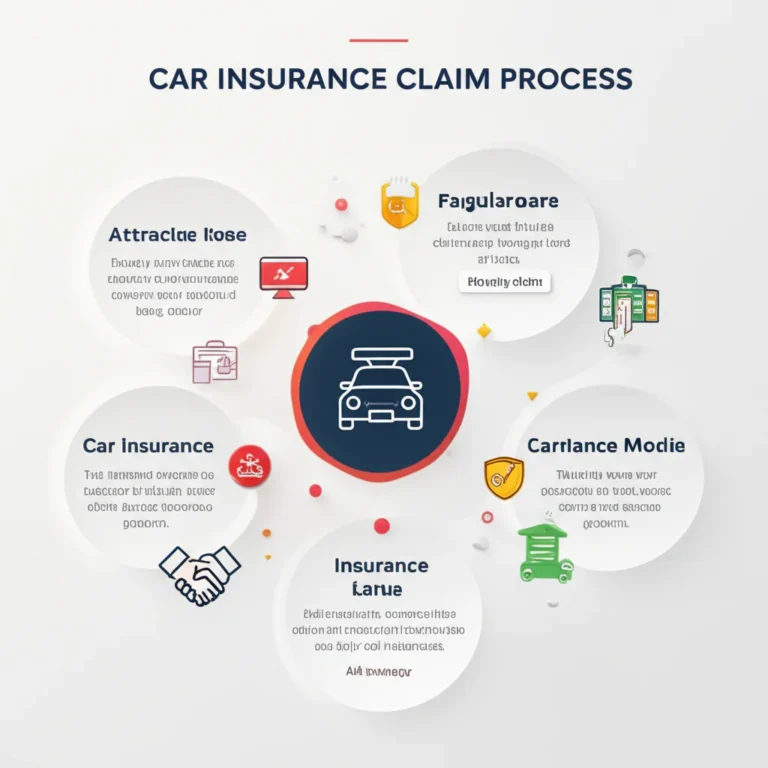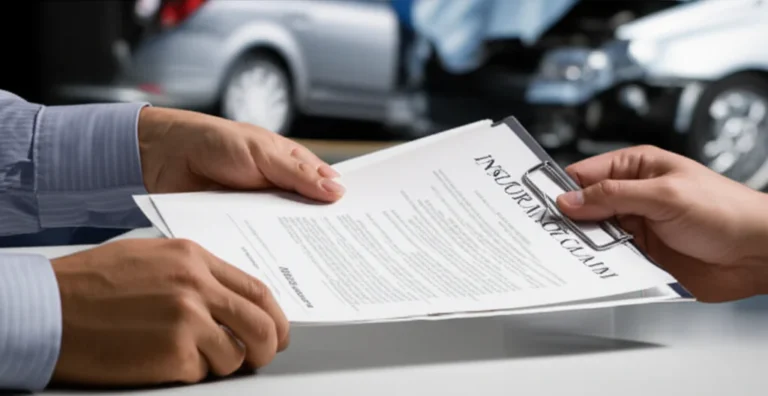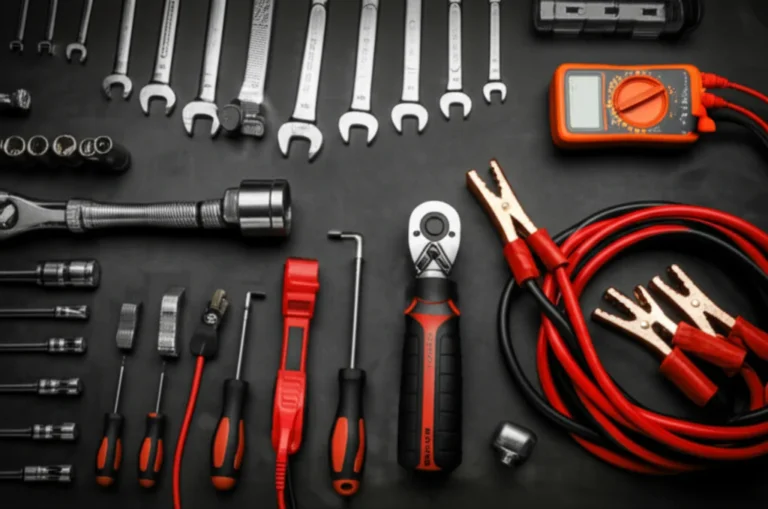Support our educational content for free when you purchase through links on our site. Learn more
7 Most Common Car Repairs After Certain Mileages (2025) 🚗
Ever wondered what your car really needs as those miles pile up? Spoiler alert: it’s not just oil changes and tire rotations! From the sneaky timing belt that could wreck your engine to the suspension parts that keep your ride smooth, knowing what repairs to expect — and when — can save you a fortune and a headache. We’ve crunched the data, talked to mechanics, and driven thousands of miles ourselves to bring you the ultimate mileage-based repair guide for 2025. Stick around, because later we’ll reveal the surprising repair that often catches drivers off guard well before 100,000 miles!
Did you know that nearly one-third of drivers delay crucial maintenance, leading to costly repairs? Don’t be that driver. Whether you’re cruising at 10,000 miles or hitting the century mark, this guide arms you with expert insights and actionable tips to keep your car humming for years.
Key Takeaways
- Oil and filter changes remain the foundation of reliable car maintenance, especially in the first 5,000 miles.
- Timing belts, spark plugs, and suspension components are the most common repairs between 30,000 and 70,000 miles.
- Driving habits and environment drastically affect repair frequency — city stop-and-go traffic wears your car faster than highway cruising.
- High-mileage fluids and parts can extend your car’s life beyond 200,000 miles.
- DIY repairs are great for basics like air filters and wiper blades, but leave critical jobs like timing belt replacement to the pros.
👉 Shop Recommended Parts:
- Spark Plugs: NGK Spark Plugs on Edmunds | Bosch Spark Plugs on Auto Trader
- Tires: Michelin Tires Official Site | Michelin Tires on Edmunds
- Synthetic Motor Oil: Synthetic Oil on TrueCar
- Car Batteries: Interstate Batteries Official | Car Batteries on Edmunds
Table of Contents
- ⚡️ Quick Tips and Facts About Common Car Repairs
- 🔧 Understanding Car Repair Needs: How Mileage Impacts Your Vehicle
- 1. 3,000 – 5,000 Mile Maintenance: The Essential Oil and Filter Change
- 2. 10,000 Mile Checkup: Tire Rotation, Alignment, and Brake Inspection
- 3. 30,000 Mile Service: Timing Belt, Hoses, and Fluid Replacements
- 4. 50,000 Mile Overhaul: Spark Plugs, Transmission Fluid, and Suspension
- 5. 70,000 Mile Tune-Up: Shocks, Struts, and Exhaust System Check
- 6. 100,000 Mile Milestone: Major Engine and Transmission Inspections
- Common Repairs at Any Mileage: Unexpected Issues and Preventive Care
- How Driving Habits and Environment Affect Repair Frequency
- DIY vs. Professional Repairs: When to Roll Up Your Sleeves or Call the Pros
- Tips to Extend Your Car’s Lifespan and Reduce Repair Costs
- Signs Your Car Needs Immediate Attention: Don’t Ignore These Warning Lights!
- Conclusion: Staying Ahead of Common Car Repairs for a Smooth Ride
- Recommended Links for Car Maintenance and Repair
- FAQ: Your Top Questions About Car Repairs Answered
- Reference Links and Trusted Sources
Body
⚡️ Quick Tips and Facts About Common Car Repairs
Welcome, fellow gearheads and daily drivers! Before we dive deep into the nitty-gritty of what your car needs and when, let’s get you up to speed with some quick-fire facts. Think of this as the appetizer before the main course.
- The 3,000-Mile Myth: That old “change your oil every 3,000 miles” rule? For modern cars using synthetic oil, it’s often outdated. Many new vehicles can go 7,500 to 10,000 miles between changes. Always check your owner’s manual!
- Tires Have a Birthday: Did you know tires expire? Most manufacturers, like Michelin, recommend replacing tires six to ten years from the date of manufacture, regardless of tread wear. The rubber degrades over time, making them unsafe.
- Ignoring the Squeal: That high-pitched squeal when you brake isn’t your car singing. It’s a built-in metal indicator telling you your brake pads are worn out. Ignoring it can lead to much more expensive rotor damage.
- Cost of Neglect: According to a survey, one-third of drivers delay car maintenance. This procrastination can turn a minor fix into a major, wallet-busting repair.
- Check Engine Light Panic: Don’t freak out! The most common reason for a check engine light is a loose or faulty gas cap, which is a simple and cheap fix. Of course, it can also signal more serious issues, so always get it checked.
- Fluid is Life: Your car has multiple essential fluids: engine oil, coolant, transmission fluid, brake fluid, and power steering fluid. Keeping them at the right levels and changing them on schedule is one of the easiest ways to extend your vehicle’s life.
🔧 Understanding Car Repair Needs: How Mileage Impacts Your Vehicle
Ever wonder why your trusty steed starts asking for more attention as the miles rack up? It’s not personal, we promise! Think of your car’s odometer as its personal clock. Every mile is a moment of work, a tiny bit of wear on thousands of moving parts. This is the essence of vehicle ownership and the foundation of all car repairs.
A car is a symphony of mechanical and electrical components working in harmony. But just like any machine, from a Swiss watch to a space shuttle, it’s subject to the laws of physics—friction, heat, and vibration are its constant companions.
- Friction: Metal grinds against metal. Fluids like oil and grease are the heroes here, but they break down over time.
- Heat: Your engine is a controlled explosion chamber! This heat, while necessary, degrades belts, hoses, and gaskets.
- Vibration: Every bump in the road sends shivers through your suspension, steering, and chassis.
This is why a maintenance schedule isn’t just a suggestion from the manufacturer; it’s a battle plan against entropy. Sticking to it is the difference between a car that hits 200,000 miles with a smile and one that gives up the ghost before its time. As the experts at Bridgestone wisely put it, “Sticking to a car maintenance schedule, and keeping good records of what you’ve done, can help extend the life of your vehicle and protect you against breakdowns, expensive repairs, and other unwelcomed surprises.”
1. 3,000 – 5,000 Mile Maintenance: The Essential Oil and Filter Change
Let’s start with the absolute bedrock of car care: the oil change. If your engine is the heart of your car, the oil is its lifeblood. It lubricates, cleans, and cools all those furiously moving parts.
Why It’s Non-Negotiable
Over time, engine oil gets contaminated with dirt, metal particles, and sludge. The filter does its best, but eventually, both the oil and filter become saturated. Running on old, dirty oil is like asking an athlete to run a marathon while drinking mud—it’s going to end badly. As Sun Devil Auto notes, this service is crucial for “preventing metal-on-metal contact, aiding cooling, and acting as a cleanser.”
Key Tasks at this Interval:
- ✅ Engine Oil Change: Drain the old, sludgy stuff and replace it with fresh, clean oil that meets your car’s specifications (check your manual!).
- ✅ Oil Filter Replacement: A new filter is essential to keep the new oil clean for as long as possible.
- ✅ Basic Fluid Check: A good mechanic will also top off your windshield washer fluid and check other vital fluids like coolant and brake fluid.
We Recommend: While the 3,000-mile interval is a safe bet for older cars or those using conventional oil, most modern vehicles from brands like Honda or Toyota running on full synthetic oil can comfortably go longer. Trust your car’s oil life monitoring system if it has one, or consult your owner’s manual.
2. 10,000 Mile Checkup: Tire Rotation, Alignment, and Brake Inspection
Around the 10,000-mile mark, your car’s relationship with the road needs a little check-up. We’re talking about the parts that connect you to the asphalt: your tires and brakes.
Keepin’ it Straight and Stopping on a Dime
- Tire Rotation: Your front tires typically wear faster than your rear ones, especially on a front-wheel-drive car. Rotating them (swapping their positions) ensures they wear evenly, extending their life and saving you money.
- Wheel Alignment: Potholes, curbs, and general road shenanigans can knock your wheels out of alignment. This causes uneven tire wear and can make your car pull to one side. An alignment “ensures tires point in the same direction and suspension components wear evenly.”
- Brake Inspection: This is a safety-critical check. A technician will measure the thickness of your brake pads and check the condition of the rotors and brake fluid. Catching wear early prevents more costly damage down the road.
What to Expect:
| Service | What It Does | Why You Need It |
|---|---|---|
| Tire Rotation | Moves tires to different positions on the car. | Promotes even tread wear, extending tire life. |
| Wheel Alignment | Adjusts the angles of the wheels to spec. | Prevents pulling, improves handling, saves tires. |
| Brake Inspection | Measures pad/rotor wear and checks fluid. | Ensures you can stop safely and avoids costly repairs. |
3. 30,000 Mile Service: Timing Belt, Hoses, and Fluid Replacements
Welcome to your car’s first major physical! The 30,000-mile service is a comprehensive check-up that addresses components that have been working hard since day one. This is where preventive maintenance really starts to shine.
The Unsung Heroes: Belts and Fluids
- Timing Belt/Chain Inspection: This is HUGE. The timing belt synchronizes your engine’s crankshaft and camshafts. If it snaps, the pistons can collide with the valves, causing catastrophic (and wallet-pulverizing) engine damage. Not all cars have a belt (some have a more durable chain), but if yours does, it needs to be inspected.
- Hoses: Radiator and heater hoses are made of rubber and are constantly exposed to heat and pressure. They can become brittle and crack from the inside out. Replacing them proactively can prevent a breakdown from an overheating engine.
- Fluid Flushes:
- Coolant (Antifreeze): Over time, coolant loses its anti-corrosive properties. A flush removes the old fluid and any contaminants, protecting your radiator and engine.
- Transmission Fluid: This is a big one. Old, broken-down transmission fluid can lead to shifting problems and eventually, a full transmission rebuild. A drain-and-fill or flush keeps things shifting smoothly.
This service often includes replacing the engine air filter and cabin air filter, which improve your engine’s performance and the quality of the air you breathe inside the car.
4. 50,000 Mile Overhaul: Spark Plugs, Transmission Fluid, and Suspension
Fifty thousand miles. You and your car have seen some things, haven’t you? At this point, some of the harder-working parts are ready for retirement. This is also when you might start to feel the age of your car. Is the ride getting a little bouncy? Is the engine not as peppy as it used to be?
Restoring the Spark and Smoothing the Ride
- Spark Plugs: These little guys create the spark that ignites the fuel in your engine. Worn-out spark plugs can lead to poor fuel economy, rough idling, and trouble starting. While some modern plugs can last 100,000 miles, many need replacing around the 50k-60k mark.
- Fuel Filter: A clean fuel filter ensures a steady stream of clean gasoline reaches your engine. A clogged one can starve the engine of fuel, causing performance issues.
- Suspension Check (Shocks & Struts): This is where that “bouncy” ride comes from. Your shocks and struts control the car’s movement over bumps. As Sun Devil Auto points out, a car with 50,000 miles has likely had its suspension oscillate over 88 million times! Worn shocks can increase your stopping distance and affect handling, making them a critical safety component.
👉 Shop for Replacement Parts:
- Spark Plugs:
- NGK Spark Plugs: Auto Trader | Edmunds | NGK Official Website
- Bosch Spark Plugs: Auto Trader | Edmunds | Bosch Official Website
5. 70,000 Mile Tune-Up: Shocks, Struts, and Exhaust System Check
As you approach the 70,000-mile mark, your car is officially a seasoned veteran of the road. The focus now is on ride quality, safety, and ensuring the systems that manage your engine’s byproducts are in good shape.
Handling Bumps and Fumes
- Shock and Strut Replacement: If you didn’t replace them at 50,000 miles, now is definitely the time to take a serious look. Worn shocks and struts don’t just make for a bumpy ride; they can compromise your car’s handling in emergency maneuvers and significantly increase the distance it takes to stop.
- Exhaust System Inspection: Your exhaust system does more than just quiet the engine; it routes dangerous fumes like carbon monoxide away from the cabin. It’s exposed to road salt, moisture, and debris, making it prone to rust and leaks. A technician will check for leaks in the manifold, catalytic converter, and muffler.
- Battery Check/Replacement: The average car battery lasts about 3-5 years. If you’re still on your original battery, you’re living on borrowed time! Cold winters and hot summers are especially tough on batteries. It’s far better to replace it on your terms than to be stranded in a parking lot.
6. 100,000 Mile Milestone: Major Engine and Transmission Inspections
Crossing the 100,000-mile threshold is a major milestone! It means you’ve taken good care of your vehicle. This isn’t the end of the road; it’s the beginning of its high-mileage chapter. The maintenance here is all about ensuring it has a long and healthy life ahead.
Prepping for the Long Haul
This is the perfect time to get a deep dive into your car’s health. Many of the services here are repeats of earlier ones, but with a focus on high-mileage formulations.
- All Belts and Hoses: If you haven’t replaced the timing belt, serpentine belt, and major coolant hoses yet, do it now. This is the number one way to prevent a catastrophic failure on a high-mileage engine.
- Fluid Upgrades:
- High-Mileage Oil: Consider switching to an oil formulated for older engines. These oils contain special additives and seal conditioners to help reduce leaks and oil consumption.
- High-Mileage Coolant: Similarly, specialized coolants can help protect aging seals and prevent corrosion in the cooling system.
- Full System Inspections: This is the time for a bumper-to-bumper look at the steering system, suspension, CV joints, and transmission.
For a great visual guide on what to look for at this stage, the “High Mileage Maintenance Tips!” video we’ve featured is an excellent resource. It covers many of the fluids and components we’re discussing right here and can help you understand what’s happening under your hood. You can jump to it here: #featured-video.
Common Repairs at Any Mileage: Unexpected Issues and Preventive Care
Life, and cars, are unpredictable. While the mileage-based schedule covers the big stuff, some components follow their own timeline. Here are the common repairs that can pop up whenever they feel like it.
- Battery Replacement: As mentioned, 3-5 years is a typical lifespan. Extreme temperatures can shorten it.
- Windshield Wipers: These rubber blades live a tough life. Sun and ozone degrade them. Plan on replacing them “about once every year, or when effectiveness is compromised.”
- Lights: Headlight and taillight bulbs can burn out at any time. It’s a simple fix but a crucial safety item.
- Tire Punctures: Nails, screws, and road debris don’t care about your maintenance schedule.
- A/C System Recharge: If your air conditioning isn’t blowing as cold as it used to, it might just need a refrigerant recharge due to a slow leak.
How Driving Habits and Environment Affect Repair Frequency
Where and how you drive can be just as important as how many miles you drive. Manufacturers often have a “normal” and a “severe” maintenance schedule in the owner’s manual. You might be surprised what qualifies as “severe.”
You’re a “Severe” Driver If You:
- Primarily drive in stop-and-go city traffic.
- Frequently take short trips of less than 5 miles.
- Drive in extreme heat or cold. (Hello, Arizona drivers, your state’s conditions are considered a “Severe Climate” requiring more frequent maintenance!)
- Drive on dusty, muddy, or salty roads.
- Tow a trailer or carry heavy loads.
If this sounds like you, you should follow the more aggressive maintenance schedule. City driving is much harder on your brakes, transmission, and engine oil than smooth highway cruising.
DIY vs. Professional Repairs: When to Roll Up Your Sleeves or Call the Pros
We love getting our hands dirty, and there’s a deep satisfaction in fixing your own car. However, it’s crucial to know your limits. Modern cars are complex machines, and a small mistake can lead to a big bill.
Great DIY Starter Projects (Difficulty: Easy 🟢):
- Engine Air Filter: Usually just a few clips to open the airbox.
- Cabin Air Filter: Often located behind the glove box.
- Windshield Wipers: Most just click into place.
- Topping Off Fluids: Checking and adding oil, coolant, and washer fluid is simple.
- Replacing a Battery: Requires a few basic wrenches, but be mindful of the correct terminal connections.
Leave it to the Pros (Difficulty: Hard 🔴):
- Timing Belt Replacement: Requires specialized tools and precise engine knowledge. An error here can destroy your engine.
- Transmission Service: Messy and requires the vehicle to be level. It’s easy to under- or over-fill, causing damage.
- Brake System Work: This is a critical safety system. Unless you’re very experienced, let a professional handle it.
- Suspension Work (Shocks/Struts): Can require spring compressors, which are dangerous tools if used improperly.
- A/C System Repairs: The refrigerant is under high pressure and is hazardous to you and the environment.
Tips to Extend Your Car’s Lifespan and Reduce Repair Costs
Want to join the 200,000-mile club? It’s easier than you think. It’s all about forming good habits.
- Follow the Schedule: We can’t say it enough. Your car’s owner’s manual is your bible. Follow its maintenance schedule.
- Be a Smooth Operator: Avoid aggressive driving. Jack-rabbit starts, hard braking, and high-speed cornering put extra stress on every component of your car.
- Listen and Feel: Pay attention to your car. If you hear a new noise, feel a new vibration, or smell something weird, don’t ignore it. Investigate it early.
- Keep it Clean: Washing your car, especially the undercarriage in winter, helps prevent rust and corrosion. A clean interior is just good for the soul.
- Check Tire Pressure Monthly: Properly inflated tires wear longer, improve fuel economy, and are safer. Bridgestone recommends checking pressure every month, as it can drop one pound for every 10-degree decrease in temperature.
Signs Your Car Needs Immediate Attention: Don’t Ignore These Warning Lights!
Your car has a language. It communicates through lights, sounds, and smells. Ignoring its warnings is a recipe for disaster. If you experience any of these, pull over safely and call for help.
🚨 The “Stop Driving NOW” List 🚨
- Flashing Check Engine Light: This isn’t a suggestion. A flashing CEL indicates a serious misfire that can quickly destroy your expensive catalytic converter.
- Oil Pressure Warning Light (The Genie Lamp): This means your engine has lost oil pressure. Shut it off immediately to prevent catastrophic engine failure.
- Engine Temperature Warning Light (The Thermometer): Your engine is overheating. Pull over and turn it off to avoid a cracked block or warped cylinder head.
- Brake System Warning Light: This could indicate low brake fluid or a failure in the system. Your ability to stop is compromised.
- Smoke from Under the Hood: This is never, ever a good sign. Pull over, get out of the car, and call for emergency services.
- A Strong Smell of Gasoline: This could be a fuel leak, which is a serious fire hazard.
Conclusion: Staying Ahead of Common Car Repairs for a Smooth Ride
So, what have we learned on this journey through the odometer milestones? Your car is a living machine that thrives on attention, care, and timely maintenance. From the humble oil change at 3,000 to 5,000 miles to the major engine and transmission inspections at 100,000 miles, each service is a chapter in your car’s story of longevity and reliability.
The key takeaway: Don’t wait for a breakdown to remind you your car needs love. Scheduled maintenance, awareness of warning signs, and adapting to your driving environment will save you from costly repairs and keep your ride smooth and safe.
We also uncovered that some repairs, like battery replacement or windshield wiper changes, can pop up at any time, so stay vigilant. And while DIY projects can be satisfying and wallet-friendly, knowing when to call in the pros is crucial for your safety and your car’s health.
Remember the question we teased earlier: How long can a car really last? With the right care, many vehicles today can easily surpass 200,000 miles, and some even hit the 300,000-mile mark. It’s not just about the miles but how you treat your car along the way.
Keep this guide handy, and you’ll be well on your way to becoming a maintenance maestro, turning your car into a trusty companion for years to come. Happy driving! 🚗💨
Recommended Links for Car Maintenance and Repair
Ready to shop for parts or learn more? Here are some trusted platforms to find quality products mentioned in this guide:
- NGK Spark Plugs: TrueCar | Edmunds | NGK Official Website
- Bosch Spark Plugs: TrueCar | Auto Trader | Bosch Official Website
- Michelin Tires: Michelin Official Website | Edmunds | Auto Trader
- Synthetic Motor Oil: TrueCar | Edmunds
- Car Batteries: Auto Trader | Edmunds | Interstate Batteries
FAQ: Your Top Questions About Car Repairs Answered
What car repairs are typically needed after 50,000 miles?
At 50,000 miles, expect to replace spark plugs, inspect or replace fuel filters, and check your suspension components like shocks and struts. Spark plugs wear out and can cause engine misfires or poor fuel economy if neglected. Suspension parts endure millions of oscillations and can affect ride comfort and safety. Transmission fluid may also need changing depending on your vehicle’s schedule.
How often should I replace my car’s brake pads?
Brake pads generally last between 30,000 to 70,000 miles, depending on driving habits and conditions. If you hear a squealing noise or feel a vibration when braking, it’s time for an inspection. Regular checks every 10,000 miles can help catch wear early and prevent damage to rotors, which are more expensive to replace.
What are the signs that my car’s transmission needs repair?
Watch for delayed or rough shifting, slipping gears, unusual noises, or fluid leaks under the car. Transmission problems can escalate quickly, so if you notice any of these symptoms, have a professional diagnose the issue immediately.
When should I change my car’s timing belt?
Most manufacturers recommend replacing the timing belt between 60,000 and 100,000 miles. However, this varies by make and model, so consult your owner’s manual. A broken timing belt can cause severe engine damage, so timely replacement is critical.
How can I tell if my car’s suspension needs fixing?
Signs include a bouncy or unstable ride, uneven tire wear, nose-diving when braking, or excessive body roll in corners. If you notice these, have your shocks and struts inspected. Worn suspension components can compromise safety and handling.
What maintenance is recommended after 100,000 miles?
After 100,000 miles, a thorough inspection is essential. Replace all belts and hoses, switch to high-mileage oils and coolants, and inspect the transmission, steering, and suspension systems. This milestone service helps prevent major failures and extends your car’s life.
Are oil changes more important as a car ages?
Yes! Older engines can produce more contaminants and may have more leaks. Using high-mileage oil with special additives can help reduce leaks and wear. Regular oil changes remain the single most effective way to keep an aging engine healthy.
Reference Links and Trusted Sources
- Sun Devil Auto: Auto Repair Timeline
- Bridgestone: Ultimate Car Maintenance Checklist
- Michelin: How Long Do Tires Last?
- NGK Spark Plugs Official Site
- Bosch Automotive Parts
- Interstate Batteries
- Reddit r/cars: How Long Do Cars Really Last?
- Edmunds: Car Maintenance Tips
- TrueCar: Auto Parts Search
For more expert insights and comparisons, explore our Car Brand Comparisons and Car Brand Histories sections at Car Brands™.





